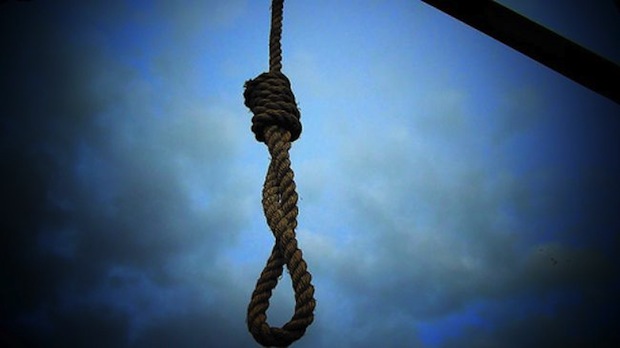The fifth annual report of Iran Human Rights (IHR) on the death penalty in Iran is an assessment of how the death penalty was used in 2012. The report is the result of efforts by human rights defenders, members and affiliates of IHR in Iran who, on some occasions, took serious risks to help provide a more accurate picture of the death penalty than the official channels do. The number of executions in 2012 in Iran is among the highest in more than 15 years. Besides the confirmed numbers, it is believed that there is a large number of unannounced executions.
The Annual Report on the Death Penalty in Iran – 2012 is being published at a time when Iranian society heads toward an uncertain future. Socio-economic conditions worsen each day, and in June 2013 another round of Presidential elections will commence in Iran. Keeping in mind the 2009 post-election protests in Iran and the Arab Spring in 2010 and 2011, Iranian authorities are well aware that the outcome of new protests in June 2013 may be even worse than the protests in 2009. They are therefore doing their best to prevent new protests.
Spreading fear through society is the Iranian authorities’ main oppressive strategy, and the death penalty is their most important instrument to do so.
Since the protests in 2009, said the report, the number of executions, particularly public executions, has risen dramatically. Public executions in 2012 were more than six times higher than numbers from 2009. The trend continues in 2013. Just in January and February 2013 alone, 20 people were hanged in public.
Secret executions in Vakilabad Prison in Mashhad (northeastern Iran) have resumed, according to the IHR report.
Since October 2012, IHR has received reports of weekly executions in Vakilabad Prison, where probably several hundred prisoners have been executed so far. IHR has included only a small portion of those executions in this report; only those that have been confirmed by at least two independent sources. IHR and ECPM characterize mass executions in Vakilabad Prison as a massacre and have urged the United Nations to send a fact-finding mission to Iran to investigate these executions.
There are also reports, said the IHR, of unannounced executions in several other Iranian prisons, such as Rajai Shahr Prison in Karaj. Death row prisoners in this prison live under the constant fear of execution. Drug-related charges still account for the majority of executions in Iran, underlined the report by the IHR, and most prisoners executed on drug-related charges are unidentified. These prisoners do not receive coverage from international media, campaigns do not exist to help save their lives, and their executions do not typically lead to international attention. However, in 2012, victims of the Iranian regime’s ‘war on drugs’– which is supported by UNODC –were finally given a face. Saeed Sedighi, a young man tortured to confess to drug trafficking, was sentenced to death after an unfair trial and executed in October 2012. His execution was postponed for one week due to an international campaign initiated by several human rights organizations as IHR and ECPM, statements issued by UN Special Rapporteurs and reactions from the international community.
Many death row prisoners in Iran are treated in a similar manner, said the report adding that they are subjected to torture, said the report, coerced confessions, unfair trials, and their cases do not receive appropriate attention. IHR and ECPM along with other human rights groups have urged the UNODC to halt all fundings to Iran as long as prisoners, convicted of drug-related charges, are facing the death penalty. IHR and ECPM are also concerned about death row prisoners from ethnic regions in Iran, especially the Arab, Baluchi, and Kurdish prisoners who remain at imminent danger of execution.
Mahmood Amiry-Moghaddam, the international spokesperson for IHR, says: “We urge the international community to pay more attention to Iran in the coming months as we expect an increase in the number of executions. There are also several prisoners of conscience who are at imminent danger of execution.” He continues: “We urge the United Nations to impose a ban on public executions, which besides being a dehumanizing punishment, also brutalizes the general public; particularly children.
Here some of the findings:
At least 580 people were executed in 2012 in Iran.
• 294 cases (51%) were reported by official Iranian sources.
• 286 cases included in the annual numbers were reported by unofficial sources.
• Only 85 out of the estimated 325 secret executions carried out in Vakilabad Prison in 2012 are included in the present report.
• At least 76% of executions included in this report were due to drug related charges.
• 60 executions were carried out in public in 2012. 46% of all public executions were carried out in the province of Fars (southern Iran).
• One third (20) of those executed in public were convicted of drug-related charges.
• At least 27 Afghan citizens and one Pakistani citizen were executed in in 2012.
• At least 9 women were executed in 2012.
• IHR has received reports of secret or ‘un-announced’ executions in more than 15 different Iranian prisons
